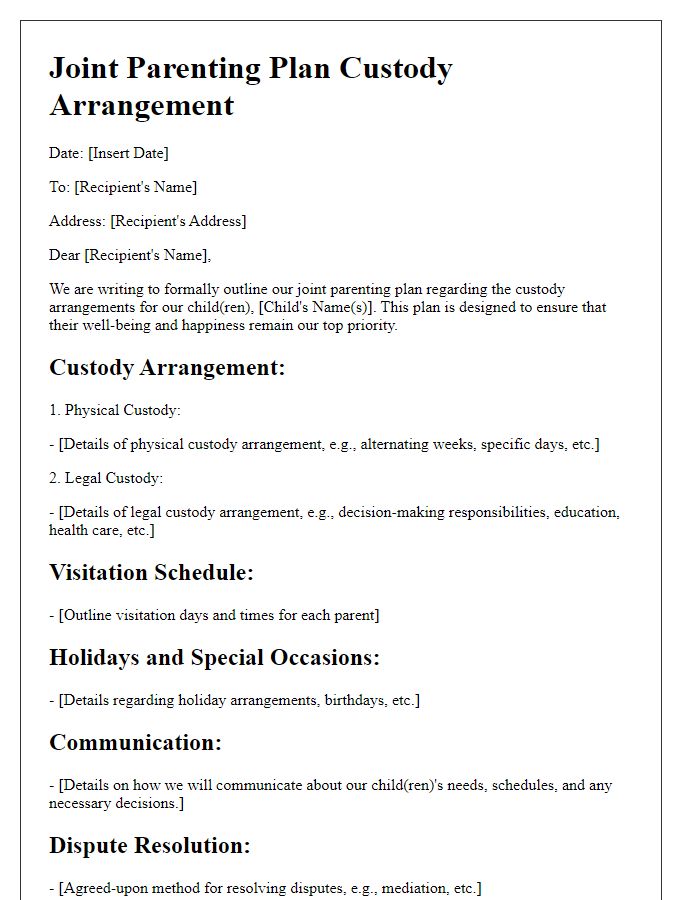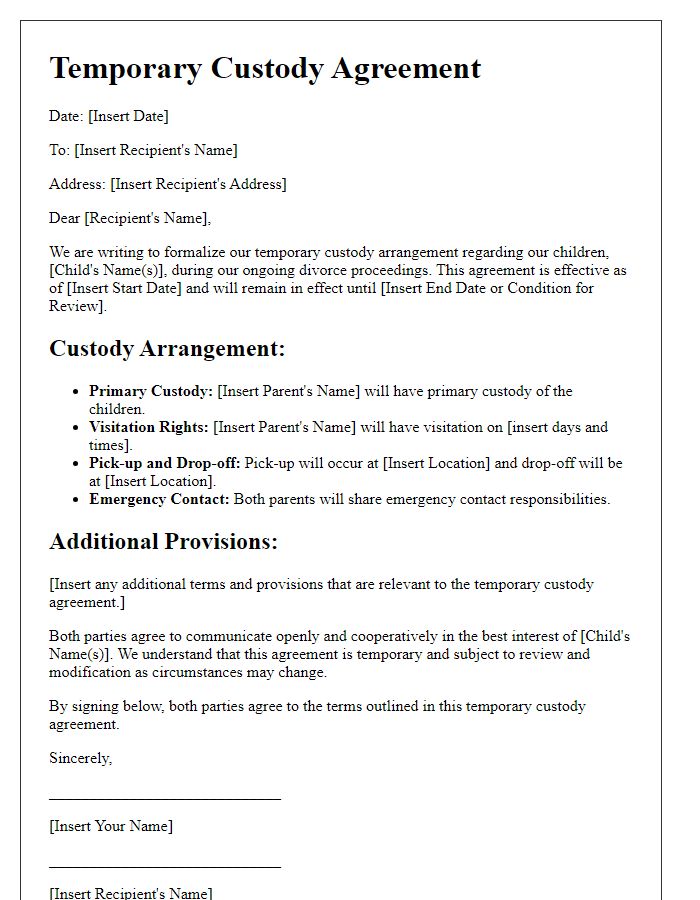Navigating family law custody agreements can feel overwhelming, but it doesn't have to be! Understanding the essential components and terminology can make the process smoother for everyone involved. In this article, we'll break down the key elements of custody arrangements, ensuring you feel confident in forging a path that prioritizes your children's best interests. Join us as we explore practical tips and insights to help you craft an effective custody agreement that works for your family!

Legal Definitions and Terminology
Legal terminology in family law custody agreements is essential for clarity and understanding in custody arrangements. Terms such as "joint custody" refer to shared parental responsibilities for a child's upbringing, often emphasizing collaboration between parents. "Sole custody" signifies one parent holds primary authority over decisions affecting the child, typically following a court determination of the child's best interests. "Visitation rights" outline the non-custodial parent's scheduled time with the child, which can vary based on circumstances and the child's needs. "Best interests of the child" is a foundational legal standard that guides decisions, ensuring the child's welfare receives priority. "Parenting plan" refers to a comprehensive document detailing the custody arrangement, including visitation schedules, decision-making authority, and dispute resolution methods. Familiarity with these key terms assists in navigating custody agreements effectively.
Child's Best Interests
Family law custody agreements prioritize the child's best interests, focusing on emotional, social, and physical well-being. Each custody arrangement, whether joint or sole custody, directly impacts the child's development and stability. Research indicates that children thrive with consistent parental involvement, often quantified through specific visitation schedules and support provisions. Legal frameworks like the Uniform Child Custody Jurisdiction and Enforcement Act (UCCJEA) provide guidelines for determining custody across state lines, ensuring that courts abide by factors such as the child's safety and psychological needs. In custody negotiations, factors including parental capabilities, living environments, and educational opportunities play critical roles in fostering a nurturing atmosphere. Regular assessments by child psychologists or family mediators can enhance compliance with agreements, maintaining focus on emotional health and secure attachments.
Parental Rights and Responsibilities
Parental rights and responsibilities regarding custody agreements define the legal obligations and privileges of parents in raising their children. Typically, custody arrangements specify physical custody, which determines where the child resides, and legal custody, which grants authority over decisions such as education and healthcare. Each parent's involvement in the child's life is crucial; for instance, joint custody can encourage stability and a balanced relationship, while sole custody may limit one parent's access yet provide structure. Court-ordered parenting plans may be informed by the best interest of the child standards, considering factors like school location (possible districts include Mountain View or Northside), sibling relationships, and any history of family dynamics or behavioral concerns. Regular parenting time schedules, supervised visitation scenarios, and potential modifications due to relocation or changing circumstances also play vital roles in these agreements.
Visitation Schedules
Creating a visitation schedule in family law custody agreements can ensure a well-structured plan for the children involved. A typical visitation schedule specifies the days and times the non-custodial parent will have access to the children, often detailing alternate weekends, weekday dinners, and holiday arrangements. For instance, visitation may occur every other weekend from Friday at 6 PM until Sunday at 6 PM, while the custodial parent retains primary care during the week. Important holidays, such as Thanksgiving or birthdays, may alternate annually between parents to promote fair sharing of special occasions. Clear stipulations regarding transportation responsibilities and possible deviation procedures help mitigate conflicts. Legal documentation often requires signatures from both parties as a commitment to the arrangements, with enforcement provisions for any violations.
Dispute Resolution Mechanisms
Child custody agreements often need well-defined dispute resolution mechanisms to address conflicts that may arise between parents. Mediation plays a crucial role, involving a neutral third-party mediator facilitating discussions to reach an amicable solution without formal court intervention. In cases where mediation fails, parents may opt for arbitration, where an arbitrator reviews the evidence and makes a binding decision based on the best interests of the child. Furthermore, regular review meetings can be scheduled to assess the effectiveness of the agreement, ensuring adjustments are made as family dynamics change, such as relocation to a new city or the child's evolving needs. Notably, documenting disputes and resolutions in detail can assist in future negotiations or court procedures, establishing a clear history of adherence to the custody arrangement.













Comments